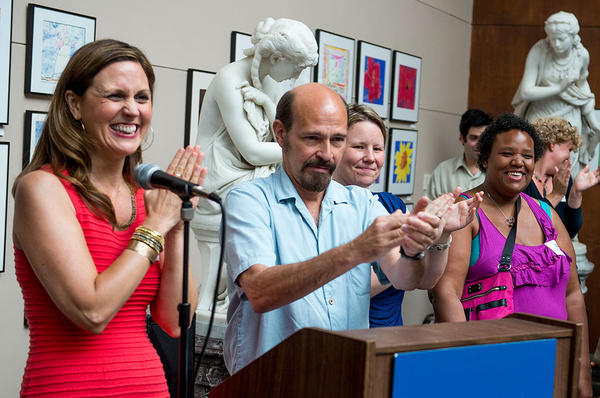Link Roundups feature articles and bits of internet goodness that our dramaturgy team digs up. If you find something you want to send our way, drop us a line on Facebook or Twitter!
♦♦♦♦♦

Upstream Arts offers a class to women with cognitive disabilities on how to negotiate relationships and avoid becoming victims of abuse. The group engages in singing, dancing and acting as they learn about sex, hygiene, body parts and self-advocacy. Judy Griesedieck for MPR News
MPR News has a feature about Upstream Arts, an organization that uses arts and creativity to teach women with disabilities about health, sex, and relationships:
Despite the often tragic stories, the women laughed as they used theater, painting, movement and song to build their social skills and their sexual vocabulary. Most of the women were familiar with words for male and female body parts, but when asked if they’d heard the word “orgasm,” the room fell silent. No one knew what it meant. So Thune explained it to them.
“They’re adults,” she said later. “And it’s OK to have love. They should have that in their life.”
♦♦♦♦♦
Onstage has a story highlighting how poorly many theatres are dealing with issues around sexual assault, weight, and family leave:
For the past couple of years, incidents involving discrimination, domestic abuse and sexual harassment of women have been, thankfully, thrust into the public eye. Whether it’s the ongoing incidents involving professional athletes, sexual assaults at an epidemic rate on college campuses or the debate over equal pay, these problems are finally being addressed on a national level.
However, while many organizations and industries are making leaps and bounds with how they treat women, the theatre industry still lacks progress in this area with some theaters taking egregious steps backward.




